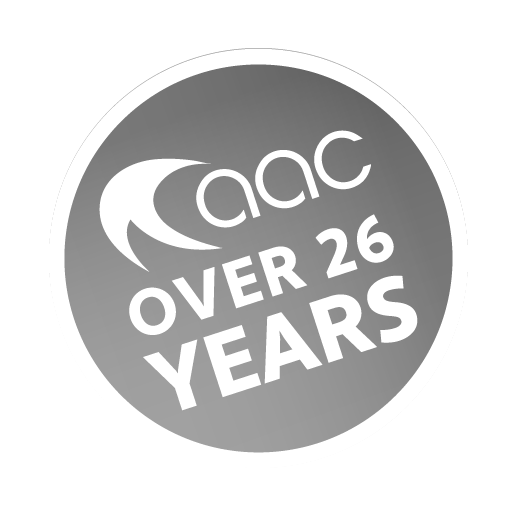

In the picturesque landscapes of the UK, older homes are a testament to architectural heritage and charm. However, these historic beauties often come without the modern comfort of air conditioning, making the warmer months particularly challenging for their inhabitants. Retrofitting air conditioning into older homes is not just about installing a cooling system; it’s about preserving the integrity of the property while enhancing comfort. At AAC, with over 25 years of experience in installing a wide range of air conditioning units, including top-rated models from Daikin, Fujitsu, and Panasonic, we understand the nuances involved in such projects. This blog post aims to guide homeowners through the process of retrofitting air conditioning in older homes, covering key considerations to ensure a successful integration.
Older homes weren’t designed with modern HVAC systems in mind. Their unique architectural features, such as thick walls, lack of ductwork, and historical preservation requirements, can pose significant challenges for air conditioning installation. Recognising these challenges is the first step towards finding effective solutions that respect the home’s character while providing the desired comfort.
One of the primary concerns when retrofitting air conditioning in older homes is preserving their historical and aesthetic value. This means finding cooling solutions that are not only effective but also minimally invasive.
The structural integrity of older homes must be carefully considered to avoid damage. Many such properties have limitations on the type of work that can be performed, especially if they are listed buildings.
The lack of existing ductwork and sometimes limited space can make installing traditional central air conditioning systems challenging. Alternative solutions need to be explored to overcome these obstacles.
A professional assessment by an experienced HVAC contractor, like AAC, is essential to determine the most suitable air conditioning solution for your home. This includes evaluating the home’s layout, electrical system capacity, and other structural considerations to ensure that the chosen system can be installed effectively and safely.
In many cases, retrofitting air conditioning in older homes may require planning permission, especially if the building is listed or located in a conservation area. It’s important to consult with local authorities and heritage organisations to ensure compliance with regulations and to preserve the building’s integrity.
Older homes can be less energy-efficient than modern constructions, so it’s important to choose air conditioning systems that offer high energy efficiency to minimise environmental impact and operational costs. Modern units from brands like Daikin, Fujitsu, and Panasonic not only provide efficient cooling but also feature environmentally friendly refrigerants.
Expert installation is key to overcoming the unique challenges presented by older homes. This includes careful routing of pipework and cables, discreet placement of indoor and outdoor units, and ensuring that the system integrates seamlessly with the home’s existing electrical infrastructure.
1. Will installing air conditioning in an older home decrease its value?
If done correctly, installing air conditioning can actually increase the value of an older home by adding modern comfort while preserving its character. It’s crucial to choose a system and installation method that is sympathetic to the building’s aesthetics.
2. How much disruption should I expect during installation?
The level of disruption depends on the type of system installed. Ductless systems typically require less invasive work than traditional ducted systems. AAC ensures minimal disruption by carefully planning the installation process.
3. Are there air conditioning options that won’t detract from my home’s appearance?
Yes, ductless mini-split systems and high-velocity systems are designed to have a minimal visual impact, both inside and outside the home. Indoor units can be mounted in discreet locations, and outdoor units can be positioned to preserve the home’s exterior appearance.
4. Can any air conditioning system be retrofitted into an older home?
Not all systems are suitable for older homes due to structural and aesthetic considerations. It’s important to consult with professionals who can recommend the most appropriate options based on your home’s specific characteristics.
5. How do I maintain the air conditioning system once it’s installed?
Regular maintenance is crucial for ensuring the efficiency and longevity of your air conditioning system. AAC offers comprehensive maintenance services, including routine checks and cleaning to keep your system running smoothly.
6. What should I do if my older home has limited space for an outdoor unit?
For homes with limited outdoor space, compact or multi-functional outdoor units that can serve multiple indoor units may be an option. AAC can help design a system that maximises cooling efficiency while respecting space limitations.
Retrofitting air conditioning in older homes requires careful consideration of the building’s historical value, structural integrity, and the specific needs of its occupants. By choosing the right system and working with experienced professionals, homeowners can enjoy modern comfort without compromising the character of their cherished properties. At AAC, we’re dedicated to providing bespoke cooling solutions that respect the unique qualities of each home we work on, ensuring that your retrofit project enhances both the comfort and value of your property.


Contact us to arrange your free survey and quote. We'll arrange for one of our full-qualified team to visit you at a convenient time.
Contact Us
Read more about air conditioning and how to get the most out of it.
 Read More
Read More Read More
Read More Read More
Read MoreContact us using the details below or fill out the form and we'll be straight in touch.







Find out more about AAC Group and the complementary services we offer: